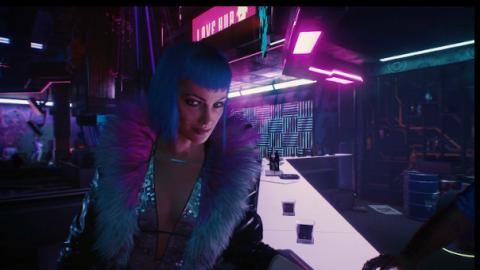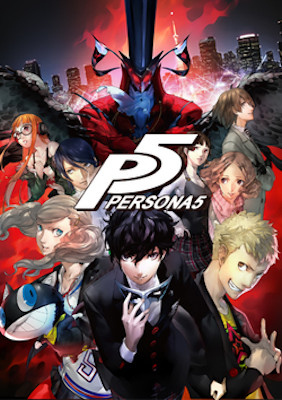Tune In: The Art of the Videogame Soundtrack

Soundtracks are some of the most iconic tunes in pop culture. Think of the work of Danny Elfman or John Williams. Songs like the Star Wars theme are universally known, and all it takes is that first blasting note of the orchestra for the listener to imagine the yellow text crawling down from the top of the screen.
Impressive soundtracks like this have made a massive imprint on pop culture, becoming an integral part of how some of the most famous stories have been told. However, few would consider soundtracks as casual listening music.
Franchise fans may listen to the Jurassic Park opening, but these pieces are generally enjoyed as an accompaniment to the media for which they were created. Some films have pop music as significant parts of their soundtrack, such as Top Gun, with songs like “Danger Zone” and “Take My Breath Away.”
This has become a common trend lately, with films like the Guardians of the Galaxy franchise having their soundtracks composed mostly of licensed music -- however, unlike Top Gun, these songs weren’t made for the film.
Videogame music has also had its own massive influence on pop culture. Think of the instantly recognizable music from the first Super Mario Brothers, and the music from Sonic the Hedgehog's first level “Green Hill Zone.”
Music in videogames has come a long way since the sometimes abrasive, albeit unique, sound of chiptune melodies. With the capacity for digital storage ever expanding, games now have fully produced and professionally recorded music to accompany them. Modern games often get the same treatment films do with full orchestral scores.
This has led to some phenomenal music created specifically for games, music that really transcends its ties to videogames and stands on its own as enjoyable listening even for those who have little interest in the source material.
A recent soundtrack that comes to mind are the tracks created for the “radio” in CD Projekt RED’s 2020 game Cyberpunk 2077. Often simplified to “Cyberpunk,” the game was a highly anticipated project based off of a tabletop role-playing game from 1988.

Part of the game’s soundtrack is composed of pop songs that have been created to be heard over the radio in game. When traveling in cars or just traversing around the world, players will hear fictional radio stations broadcasting music that was created specifically for the game.
As a means of building the world, the game features music created by a wide variety of artists. While many of the real-world artists are presented under fictional band names, some notable artists who created and or performed music for Cyberpunk are: Refused, Run The Jewels, A$AP Rocky and Grimes. Grimes’s music is presented under the fictional popstar Lizzy Wizzy, a character she voices in the game.
There are 31 songs, three volumes, of original radio music for Cyberpunk spanning genres, creating a wide variety of interesting songs. One standout -- “Resist and Disorder” by “The Cartesian Duelists” (real world artist: Rezodrone) -- blends electronic, hard rock and a driving industrial rhythm. The song feels heavy with an insanely catchy chorus that breaks up the sound before bringing it back down to the crunchy guitar riff that serves as the song’s base.
Like most of the songs on the “Cyberpunk” radio, the lyrics don’t feel constrained simply to the world of the game. Many of the punk and anti-corporate ideals expressed in the music seemn just as relevant to the real world, as they do the fictional sci-fi dystopia.
Someone who isn’t necessarily a fan of the source material, could thoroughly enjoy, and connect with, this music. Music in Cyberpunk isn’t held hostage to its medium. Most songs don’t refer to videogames or make allusions to fictional slang or terminology. This doesn’t stop the music from characterizing and building the game world in a believable way.
Arguably the greatest music in Cyberpunk is the music of the fictional band Samurai. Samurai is a key part of the story of Cyberpunk 2077, with one of the main characters, Johnny Silverhand (portrayed by Keanu Reeves), as a guitarist and lead singer of the group.
Samurai’s music is performed by real-world Swedish punk band Refused, and the songs are terrific. “The Ballad of Buck Ravers” is a punk song about a corporate office worker being pushed over the edge by mindless work that inevitably gets him nowhere. “Never Fade Away” is another song exploring the idea of love lost, but not forgotten. The song features a catchy chorus almost reminiscent of ‘80s classic rock, contrasting but still complementing the harder tone of the rest of the song.
“Chippin’ in” is a hard rock song that plays with the double meaning of the gambling term with the transhumanist ideas of microchips and cybernetic implants, which serve as a key theme in cyberpunk.

Cyberpunk’s radio music was made specifically as pop music, it was further from the traditional soundtrack in that sense; however, there are other games that emulate pop music as a part of their backing tracks and to great success.
Atlus’ Persona series has a long history of soundtracks, with the most recent entry into the series Persona 5 having some of the best music yet. Persona 5 has what would best be described as jazzy tunes with lyrics beautifully sung by the Japanese vocalist Lyn. Her vocals combined with the incredible combination of heavy bass lines, synth and string accents make for some tracks that are unforgettable.
The songs perfectly capture the vibe of a lounge singer in a smoky jazz bar. The silky vocals and catchy melody in a song like “Last Surprise” and “Life Will Change are enjoyable, even for people who don't like videogames.
Being a fan of punk and hard rock myself, the soundtrack for a game like Persona 5 is hardly the kind of music I would identify with my general music tastes. However, this soundtrack’s quality transcends genre preferences altogether. While not every track is accessible as casual listening (it still is a soundtrack after all), there are an outstanding number of terrific tracks to choose from.
The Devil May Cry series is another franchise that blends pop elements into its backing tracks.
Devil May Cry has a heavy emphasis on hard rock -- relevant to the over-the-top action and character of its main protagonist, accented with electronic elements.
The songs that really steal the show in the Devil May Cry games are the battle tracks that play during combat encounters in the game. The fifth game’s battle tracks stand out as they achieve unique sounds from the songs in the rest of the franchise, as well as helping to provide insight into the characters they play for.
“Devil Trigger” is the battle theme for one of the game’s three protagonists Nero. “Devil Trigger” stands in stark contrast to the series norm with a sound that can almost be described as EDM. The song has an explosive, energetic attitude to it that matches the chaotic action associated with Nero’s fighting style.
The female vocalist gives the piece an overall pop feel; however, under the surface, a solid hard rock base accompanied with hard rock backup vocals is reminiscent of songs from earlier games in the franchise.

The best song from Devil May Cry 5 is “Bury The Light,” which is the battle track for longtime series antagonist Vergil, who was released as a playable character in conjunction with the special edition of the game in 2020. The song topped the Apple music soundtrack chart in september 2020 and ranked #7 of all September 2020 when it was released.
“Bury the Light” is an epic orchestral metal song. The song accents its heavy metal core with electronic and orchestral elements, such as its electric violin opening. The lyrics are sung by Victor Borba, and capture the character of Vergil, a man (half demon) on a quest for power that has gone too far to be stopped.
Narratives and themes aside, a lot of videogame music is all about fun. While there’s an almost infinite supply of music that deserves to be recognized, that's an ambitious task for this article. However, I think the point stands that there is a lot of terrific art created around the world, much of it overlooked in the mainstream. If nothing else, I compel you to listen to something you normally wouldn’t, videogame or not -- maybe you’ll find something new worth appreciating.
Author Bio:
Garrett Hartman is a contributing writer at Highbrow Magazine.
For Highbrow Magazine
Image Sources:
--Super Mario Bros. (Wikipedia, Creative Commons)
--Anna Hanks (Wikimedia, Creative Commons)
--Rice Digital (Wikipedia, Creative Commons)































































































































































































































































































































